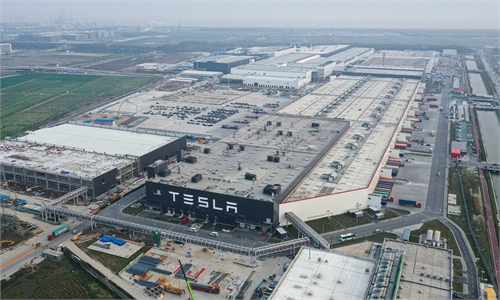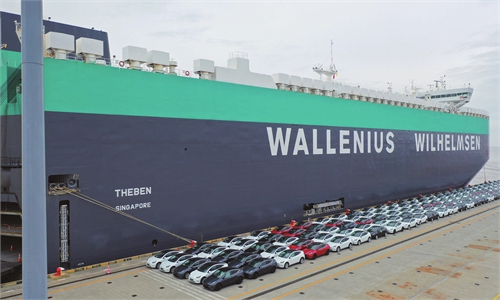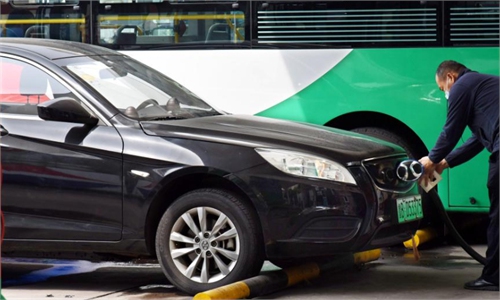Chinese cities start to ease restrictions on vehicles purchase to inspire consumption
More cities expected to implement economic stimulus measures
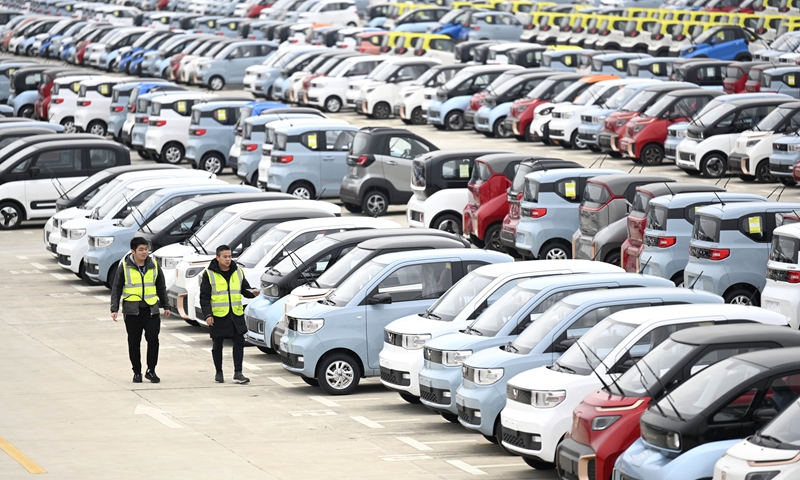
Workers check new energy vehicles at a logistics park. Photo:Xinhua
Shenzhen in South China's Guangdong Province plans to offer subsidies to inspire vehicle sales, in line with the central government's call to boost consumption and shore up the economy.
Shenzhen will also add 20,000 car plate quotas, according to a notice seen on the official WeChat account of the municipal government on Thursday.
"Let's say the average car price in Shenzhen is 200,000 yuan ($29,700) … the addition of 20,000 license plates could boost sales by 4 billion yuan, which is quite significant and will make a great contribution to local economic growth," Zhang Xiang, a research fellow at the Research Center of Automobile Industry Innovation of the North China University of Technology, told the Global Times on Thursday.
Shenzhen will also offer buyers of qualified new-energy vehicles (NEVs) who register them in Shenzhen a subsidy of up to 10,000 yuan per vehicle.
Other local governments, including Central China's Hubei Province, have announced similar policies. In Hubei, those who buy NEVs in the second half of this year are eligible for government subsidies of up to 8,000 yuan, the provincial government announced on Tuesday.
Experts said more first and second-tier cities with limits on the number of license plates will increase their quotas.
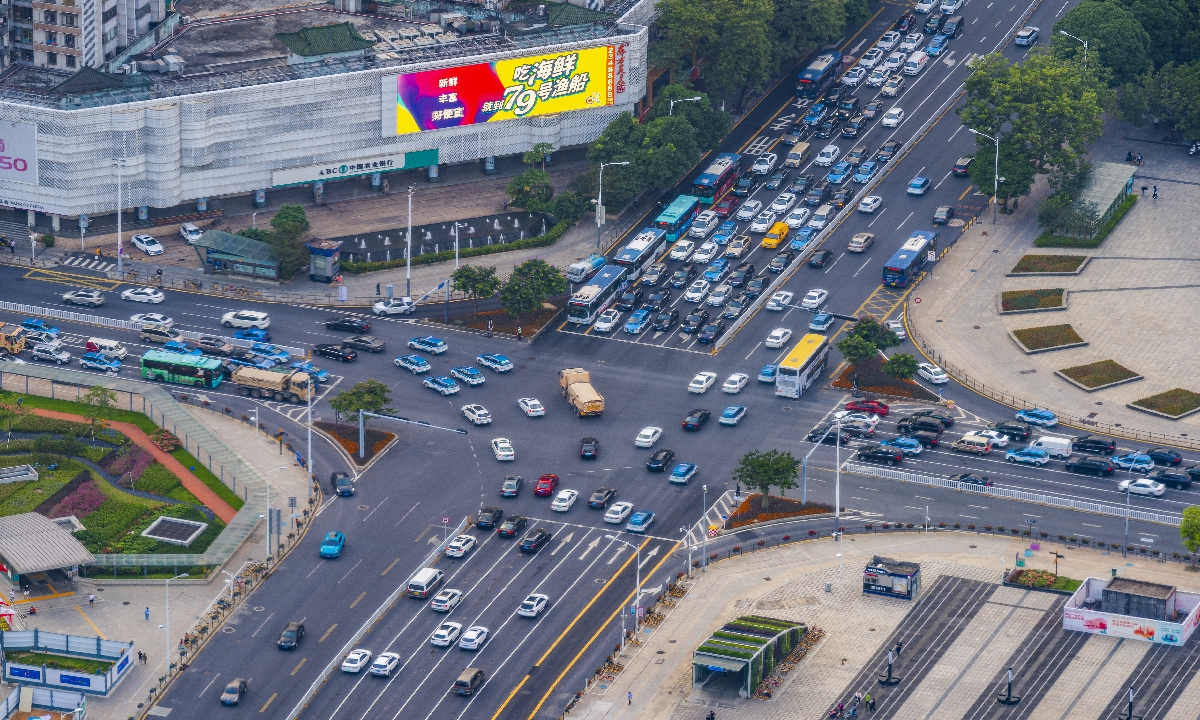
A crossroad in Shenzhen, South China's Guangdong Province Photo: VCG
Cui Dongshu, secretary-general of the China Passenger Car Association (CPCA), told the Global Times that other first-tier cities, such as Shanghai, Guangzhou and Beijing may announce similar stimulus packages in response to the call from the central government to boost consumption.
The State Council, China's cabinet, said on Monday that the country is to relieve car buyers of vehicle purchase taxes to the tune of 60 billion yuan in stages, among 33 relief measures aimed at stabilizing the economy.
More detailed measures are to be issued by the end of May.
"Reductions of purchase taxes on passenger vehicles were also rolled out in 2009, which proved to be successful in invigorating the auto market," Zhang said.
If China is to halve the taxation rate to 5 percent, the 60 billion yuan cut may lead to additional sales worth 1.2 trillion yuan, or 8 million vehicles , Zhang estimated.
Analysts said that higher license plate quotas and lower taxes will give a strong boost to car sales, which fell 11.9 percent year-on-year in the first four months.
Although the government has yet to announce the details, say, when it will take effect and what vehicles will be covered, carmakers including Great Wall Motor are already looking forward to the stimulus measures.
"We see that more cities are formulating stimulus policies and we are waiting for the details. We will definitely have cars that meet the requirements. Our commercial vehicles and most passenger cars will be eligible," a person with Great Wall Motor told the China Securities Journal.
Car sales in May saw a gradual recovery from April, when sales plunged 35.5 percent year-on-year due to plant stoppages and logistics difficulties amid COVID-19 resurgences.
Car sales in the first three weeks of May hit 780,000, up 34 percent from the same period in April, but still 16 percent lower than the same period in 2021, according to data from the CPCA on Wednesday.
Experts said car sales would pick up gradually in the second quarter, and the full-year figure would be approximately the same as last year as COVID-19 flare-ups are brought under control and more support measure are implemented.
"Vehicle output is expected to return to normal in June and losses could be made up for in the second half of the year," Zhang said.
